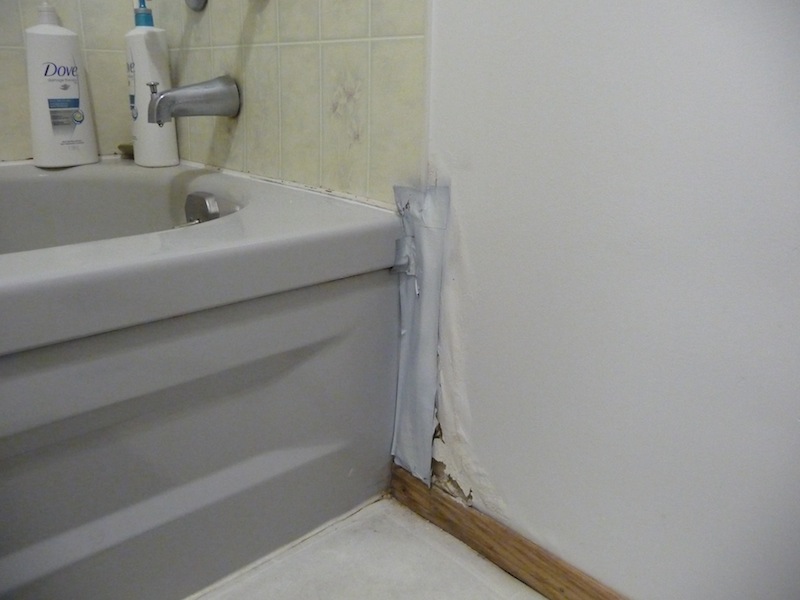How to Stop Water Damage in Your Bathroom
How to Stop Water Damage in Your Bathroom
Blog Article
How do you feel about How to Repair and Prevent Bathroom Water Damage?

The washroom is extremely prone for moist build-up and also potential water damages due to the frequent use water in it. This article provides straightforward evaluation methods to help detecting water damage threats.
The frequent use water in the bathroom makes it very vulnerable for damp buildup as well as possible water damage. By checking it routinely, you can decrease water relevant damages.
The following set of examinations is easy to do as well as should be done when in every 3 months in order to keep your restroom healthy and to avoid possible water damages triggered by the bath tub, the shower, pipe joints as well as plumbing, sinks, closets, and also the toilet
Do not disregard performing these assessments as well as be complete while executing them. Remember that these simple inspections can save you a lot of money by supplying early indicators for water damages
Tub as well as Shower
The shower and also bath tub call for unique focus and also upkeep. Examine the tiles and replace if cracked. Make sure that there is no missing out on cement in between the floor tiles. Check and also change split caulking at joints where the wall surfaces satisfy the floor or the tub. Blocked drains and pipes problems will prevent the bathtub from drying out and also might show severe issues underneath the tub. Consult with a professional immediately to stop architectural damages. Focus on discolorations or soft areas around the bath tub wall surfaces as they may indicate an inner leakage.
Plumbing
Signs for water damages are difficult to spot since most pipelines are set up inside the walls.
Pay special focus to floor covering as well as walls moisture and also spots as they may indicate an unseen plumbing issue. Check dampness levels in adjoining areas also.
Sinks and Cabinets
Sinks and also cupboards are exposed to moisture and also humidity daily and also are typically overlooked. Check frequently under the sink and on the kitchen counter above it. Repair any kind of drip in the trap as it might recommend drain troubles. Take a look around the sink, slow draining pipelines may show a blocked drain. Change sink seals if they are broken or loosened.
The Toilet
The commode is a susceptible water junction. Inspect the water lines and look for leaks around the commode seat, in the hose pipe, and also under the water tank. If you find any type of indicators of wetness on the flooring around the bathroom, look for leakages in the toilet rim and also tank seals.
Realize that hanging toilet dish deodorants enhances the chances for blockages.
TIPS TO PREVENT WATER DAMAGE IN THE BATHROOM
The average household uses approximately 80-100 gallons of water per person per day. For a family of 4, that's almost 2,500 gallons of water a week! The largest portion of this consumption comes from bathroom use. Flushing the toilet uses the most water, followed by taking a shower or bath. With that much water running through the home, water damage in the bathroom is bound to happen. Knowing how to spot signs of a water leak is essential to preventing long-term damage. This guide provides you with tips to reduce the impact of water damage on your bathroom.
CAUSES OF BATHROOM WATER DAMAGE
Pipe breaks are the most common cause of water damage we see in our daily jobs. The age of a pipe plays a large role in a pipe break as well as corrosion. Over time, the metal begins to break down, allowing water to escape. Frozen pipe breaks are also a concern in the winter months. Toilet overflows caused by paper products or children flushing inappropriate items. Degraded caulking around the toilet or bathtub can allow water seepage, sometimes behind the fixture, into the subfloor or walls. Condensation forms when the water in a pipe is cooler than the air temperature. Beads of water form on the exterior of the pipes, sometimes so much so that the water begins to drip and pool below. Sink or shower backups created by poor drainage. HOW TO PREVENT WATER DAMAGE IN YOUR BATHROOM
Inspect your toilet supply line for worn or frayed hoses and replace them as needed. Winterize your plumbing to prevent a frozen pipe break. Use vent fans to prevent condensation that can lead to mold growth. Routinely check and replace degraded caulking around your toilet or bathtub. Increase the temperature in your toilet tank and insulate your pipes during the warm summer months to keep condensation from forming. Use child safety locks on the toilets. Flush only toilet paper. "Flushable" wet wipes are actually not good for your plumbing system. Additionally, feminine hygiene products should not be flushed. Prevent water from escaping the tub or shower. Make sure shower curtains are in good condition. Inspect shower doors and replace the seal strip if necessary. Wipe up any water that accumulates on the floor and use bath mats. Water left to sit can cause damage to the tiles and flooring. Refrain from using bath products containing heavy oils to avoid a clogged drain.

Do you really like reading up on Preventing Water Damage in the Bathroom? Write a remark below. We'd be glad to find out your thinking about this posting. In hopes that you visit us again in the near future. Are you aware of someone else who is intrigued by the topic? Do not hesitate to promote it. We cherish reading our article about Preventing Water Damage in the Bathroom.
Visit Our Website Report this page